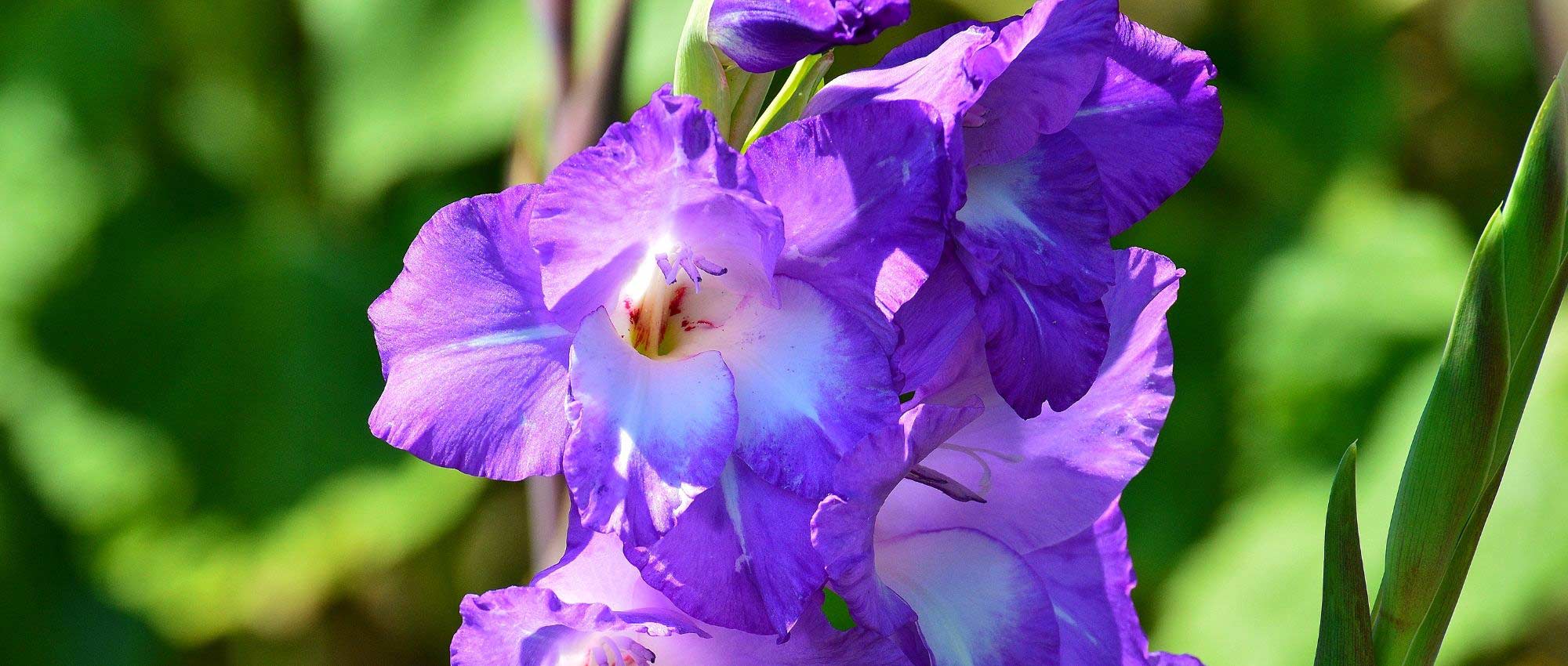
Gladioli: 5 ideas for successful combinations
For harmonious and colourful borders!
Contents
Gladiolus is a large bulbous plant that delights with its flowering spikes bearing large, brightly coloured flowers. Colour range seems endless: it allows creating beautiful harmonies by pairing them with other flowers in the same tones, or, conversely, contrasts by pairing colours opposite on the colour wheel. Their imposing, vivid flowers can be tricky to combine. They can be softened with subtler, more natural flowering. D’une manière générale, gladioli go very well with other summer bulbs: dahlias, lilies, eucomis, ornithogalums, cannas, crocosmias, agapanthus… Dahlias also occur in a wide range of colours, so it is easy to find varieties that pair perfectly with gladioli!
Follow our tips to create harmonious borders with gladioli!
Chic and romantic garden
Gladioli with soft pink or white flowers can create a romantic and elegant flowerbed. For example, opt for the very delicate flowering of ‘The Bride’, ‘Nymph’ or ‘Elvira’. Pair the pure-white flowering of Gladiolus ‘The Bride’ with the white heads of Echinacea ‘White Swan’. You will achieve an atmosphere of purity and romance. Another lovely combination is to pair the large flowers of gladiolus ‘Rose Supreme’ with the delicate, rather airy flowering of Eremurus robustus. The small flowers of Eremurus add lightness against the more massive flowers of the gladiolus, and the two plants harmonise in cream-pink to orange tones. Other plants could of course feature in this kind of scene: gypsophila, Campanula lactiflora ‘Loddon Anna’, Persicaria amplexicaulis, agapanthus ‘Double Diamond’, Delphinium ‘Casablanca’… And what would a romantic garden be without roses? I particularly recommend old garden roses, such as ‘Old Blush’, ‘La France’ or ‘Mme Alfred Carrière’. Also discover the unusual Dierama pulcherrimum, or “angel’s fishing rod”, which bears long supple stems on which are inserted trailing pink bell-shaped flowers.
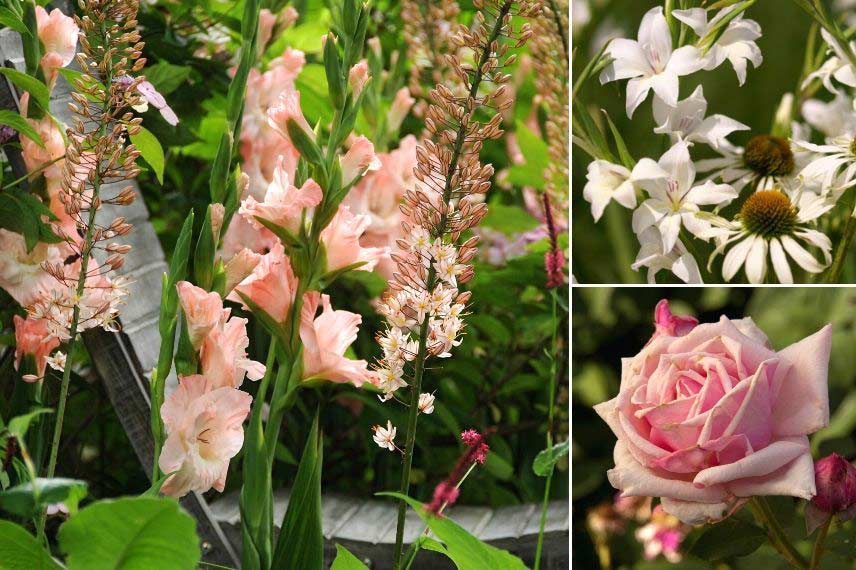
Gladiolus ‘Rose Supreme’ and Eremurus robustus (photo Wouter Koppen – iBulb) / Gladiolus colvillei ‘The Bride’ and Echinacea ‘White Swan’ (photo iBulb) / Rose ‘La France’ (photo Zdenek Kiesenbauer)
Read also
Gladioli: planting, growing and careFor a border with soft, warm tones
Create a flower bed in very soft cream–orange tones for a luminous, warm effect. For example, you can pair the large cream-coloured flowers of Gladiolus ‘Cream Perfection’ with the rounded pompom inflorescences of Dahlia ‘Souvenir d’Été’ (or Dahlia ‘Sylvia’). You will thus have a pleasing contrast of form between these flowerings! Dahlia intensifies the orangey colour suggested by the gladiolus, which is much paler. Include in the bed a few Lily ‘Friso’, which bears elegant deep crimson flowers at the centre of the petals and white on the outside. This combination will give lots of vitality and softness. To stay within the same tones, you can plant nasturtiums, Rudbeckias, daylilies and crocosmias on the outside of the bed. Use the large flowers of lilies, dahlias and gladioli sparingly, among lighter flowerings and grasses, so as not to create an overly heavy, imposing effect. Another advantage of this style of bed is that it will provide plenty of flowers for making bouquets!
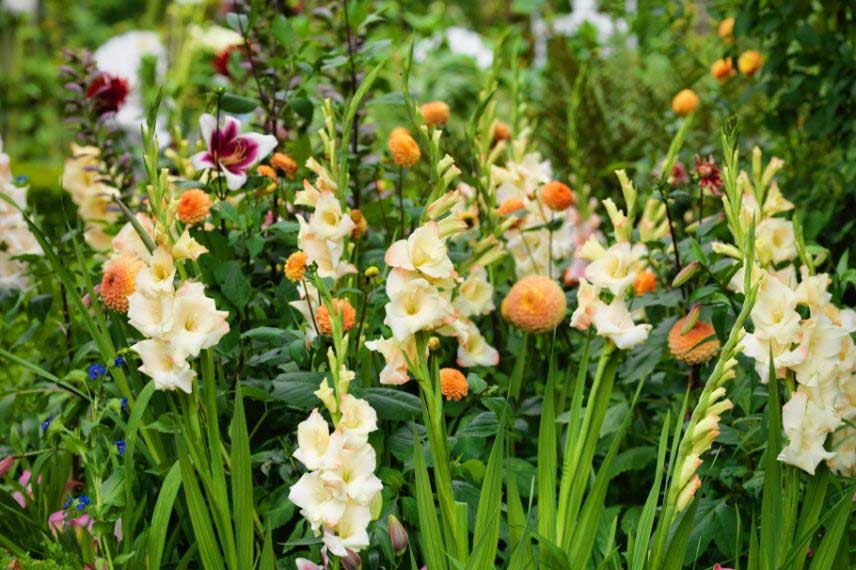
Gladiolus ‘Cream Perfection’, Dahlia ‘Souvenir d’Été’ and Lily ‘Friso’ (photo Steven Bemelman – iBulb)
Discover other Gladioli
View all →Available in 1 sizes
Available in 0 sizes
Available in 0 sizes
Available in 0 sizes
Available in 0 sizes
Available in 1 sizes
Available in 1 sizes
Available in 1 sizes
Available in 1 sizes
Available in 1 sizes
For a naturalistic garden
Contrary to what one might think, gladioli also have a place in naturalistic, country-style gardens. Several varieties offer a soft, delicate flowering: this is the case, for example, of the Abyssinian gladiolus (Gladiolus callianthus), which bears white flowers with narrow petals, and the charming Gladiolus italicus, with small, elongated pink flowers. More generally, other gladioli also fit into this type of garden, but sparingly, among many other plants with lighter, airier flowering. Thus, gladioli will bring touches of colour and enliven the setting. You can pair them with Gaura lindheimeri, Cosmos, Verbena bonariensis, Veronicastrum, Agastache… Also consider ornamental grasses, such as Pennisetum, whose spikes are invaluable for adding lightness and volume to a border. You can also create a beautiful combination by pairing the white flowers of Acidanthera with the mauve flowers of Agastache, Phlox paniculata and Verbena rigida, all lightened by the flower spikes of a Pennisetum. You will achieve a bucolic effect, with flowers that seem to float in the air.
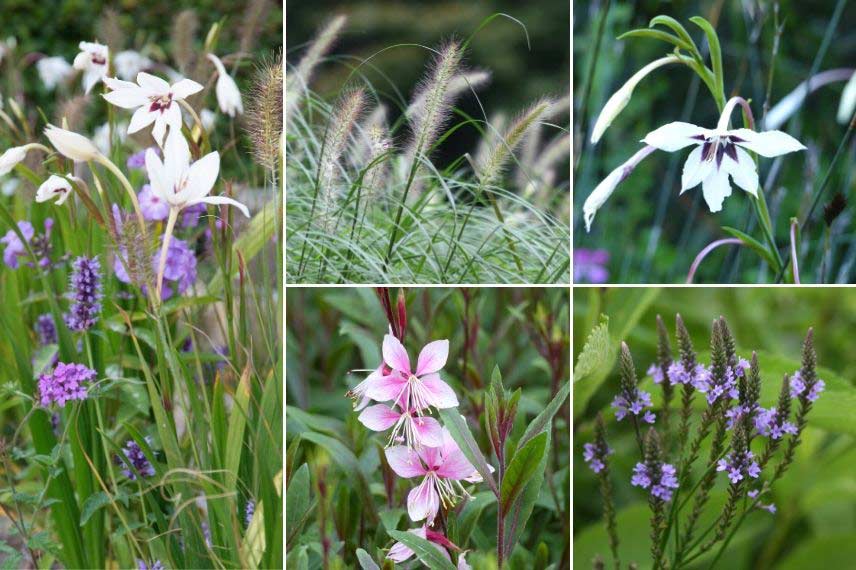
Scene with Gladiolus callianthus ‘Murielae’ or Acidanthera, agastache, Phlox paniculata, Pennisetum and Verbena rigida (photo Maayke de Ridder – iBulb) / Pennisetum alopecuroides (photo Eggmoon) / Gladiolus callianthus / Gaura lindheimeri ‘Cherry Brandy’ / Verbena hastata (photo Cody Hough)
Read also
How to winter and divide your gladioli?Harmony in Blue and White
Create a superb border in dominant blue and white tones, with small touches of soft pink to soften the whole. Make the most of, for example, the very intense dark-blue hue of Gladiolus ‘Purple Flora’, which will lend the scene its intensity. The white flowering of Japanese Anemones provides a striking contrast, both in their form (light flowers borne atop long stems) and in their pure white colour, marked with yellow at the centre. They attenuate the formal aspect brought by the dark-blue flowers of the gladioli. Gladioli ‘Adrenalin’ and ‘Milka’, with pink and mauve flowers respectively, also introduce softness to the composition. One can also make out the airy inflorescences of Verbena bonariensis. Delphiniums, Phlox paniculata, Leucanthemum could, of course, also have been added to the scene… This border has a style both wild, with the tall stems of the anemones and Buenos Aires verbena, and at the same time chic and formal, with the rigid, intense-blue inflorescences of the Gladiolus.
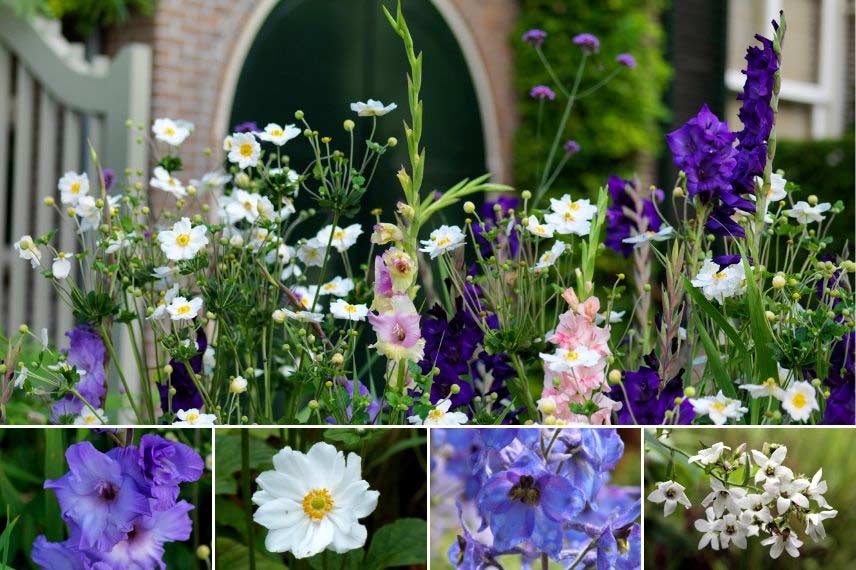
Association with gladioli ‘Purple Flora’, ‘Milka’, ‘Mon Amour’, ‘Adrenalin’, Japanese Anemones and Verbena bonariensis (photo Steven Bemelman – iBulb) / Gladiolus ‘Milka’ (photo Steven Bemelman – iBulb) / Japanese Anemone ‘Whirlwind’ / Delphinium / Campanula lactiflora ‘Alba’
For an exotic garden
You can create an exotic, lush garden that evokes a journey. Choose primarily vivid red flowering, tempered with a few orange and yellow flowers, to achieve a flamboyant effect! For example, pair the beautiful red flowers edged with a white trim of Gladiolus primulinus ‘Atom’ with the unusual red‑orange flowers of Nerine sarniensis. Plant alongside them Crocosmias, Kniphofia, Eremurus ‘Pinokkio’… Also consider the distinctive flowering of purple Eucomis (for example ‘Sparkling Burgundy’). Give the border a true “jungle‑garden” look by incorporating large‑leaved plants: Cannas, palms, banana (Musa basjoo), castor oil plant, Colocasia… Finally, don’t forget Phormium ‘Pink Panther’, also called New Zealand flax, which forms a clump of linear, thick leaves in purple–bronze–red tones. You will obtain an original, vibrant summer border.
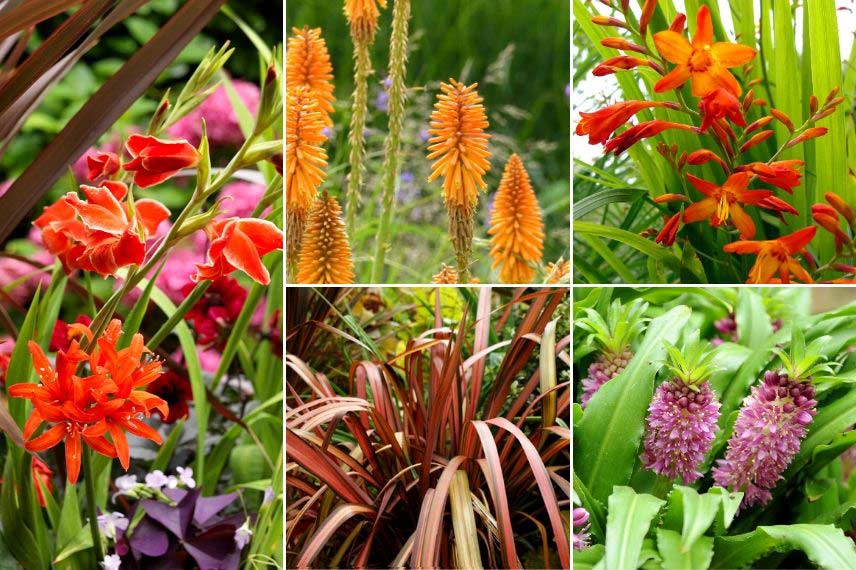
Gladiolus primulinus ‘Atom’ and Nerine sarniensis (photo Steven Bemelman – iBulb) / Kniphofia ‘Fiery Fred’ / Crocosmia / Phormium ‘Pink Panther’ / Eucomis ‘Sparkling Burgundy’ (photo Wouter Koppen – iBulb)
- Subscribe!
- Contents
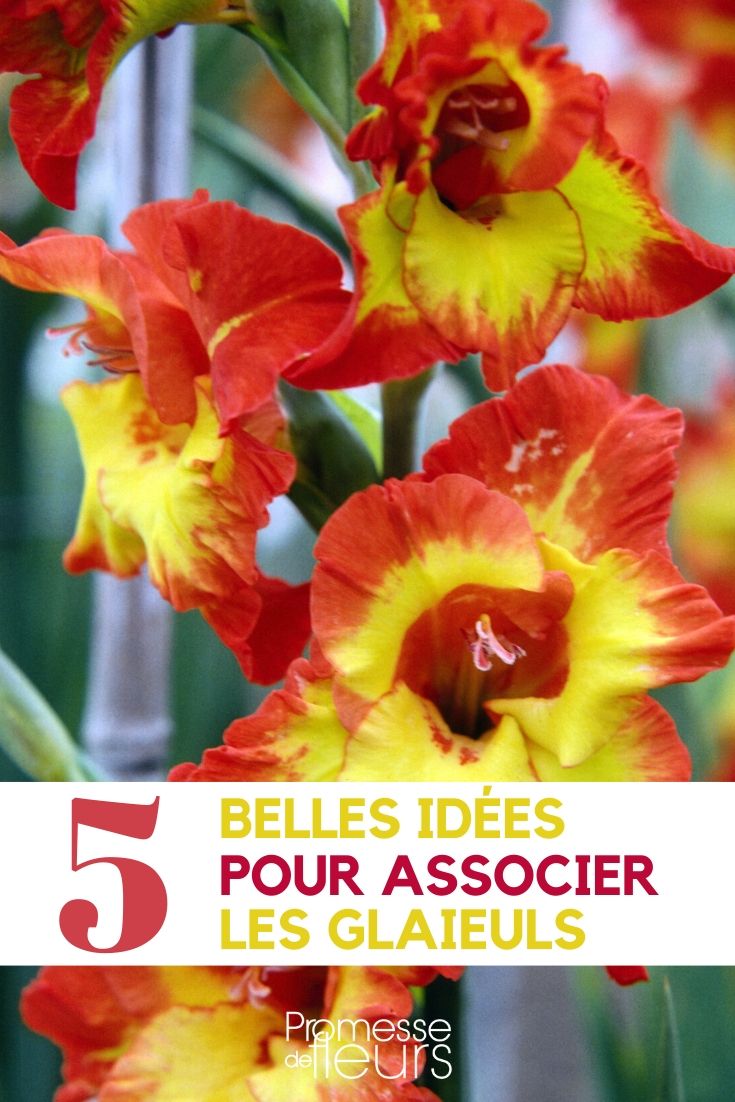































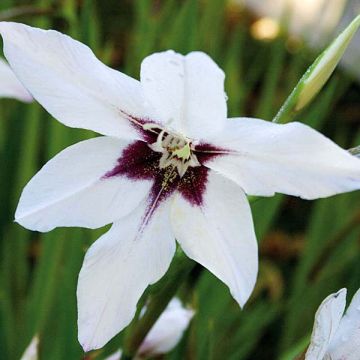
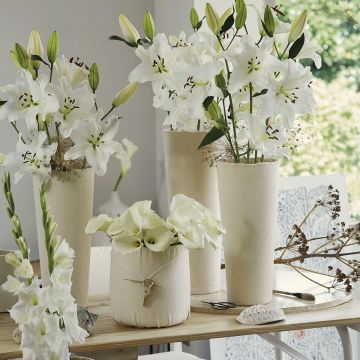
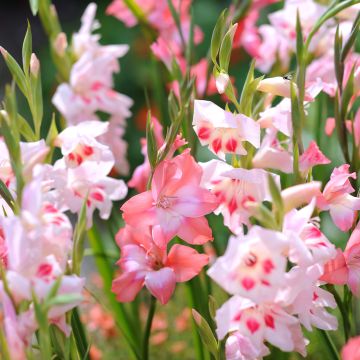
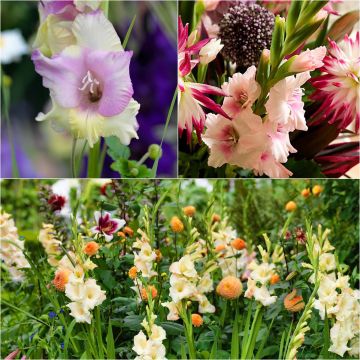
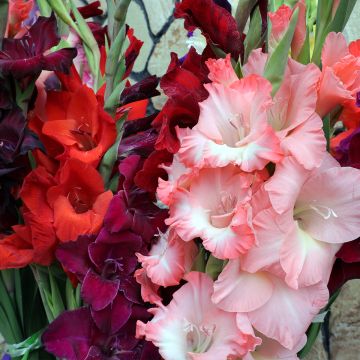
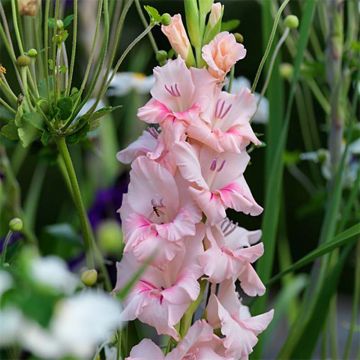
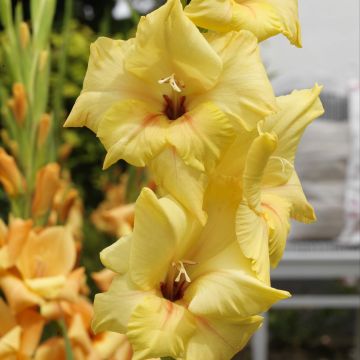
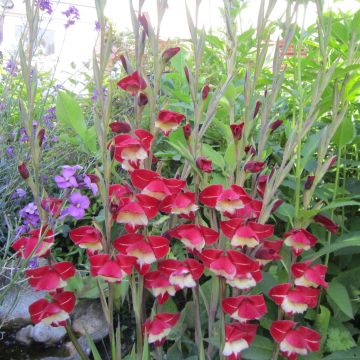
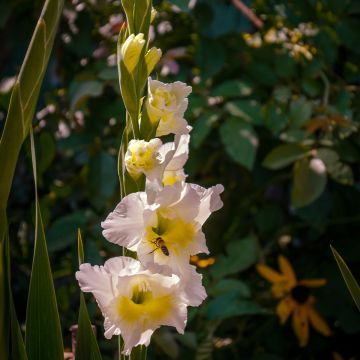
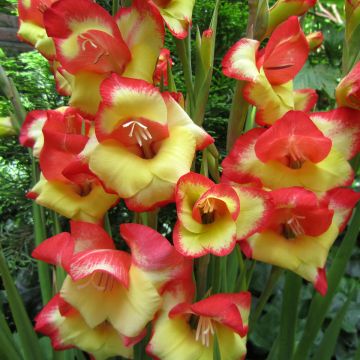
Comments